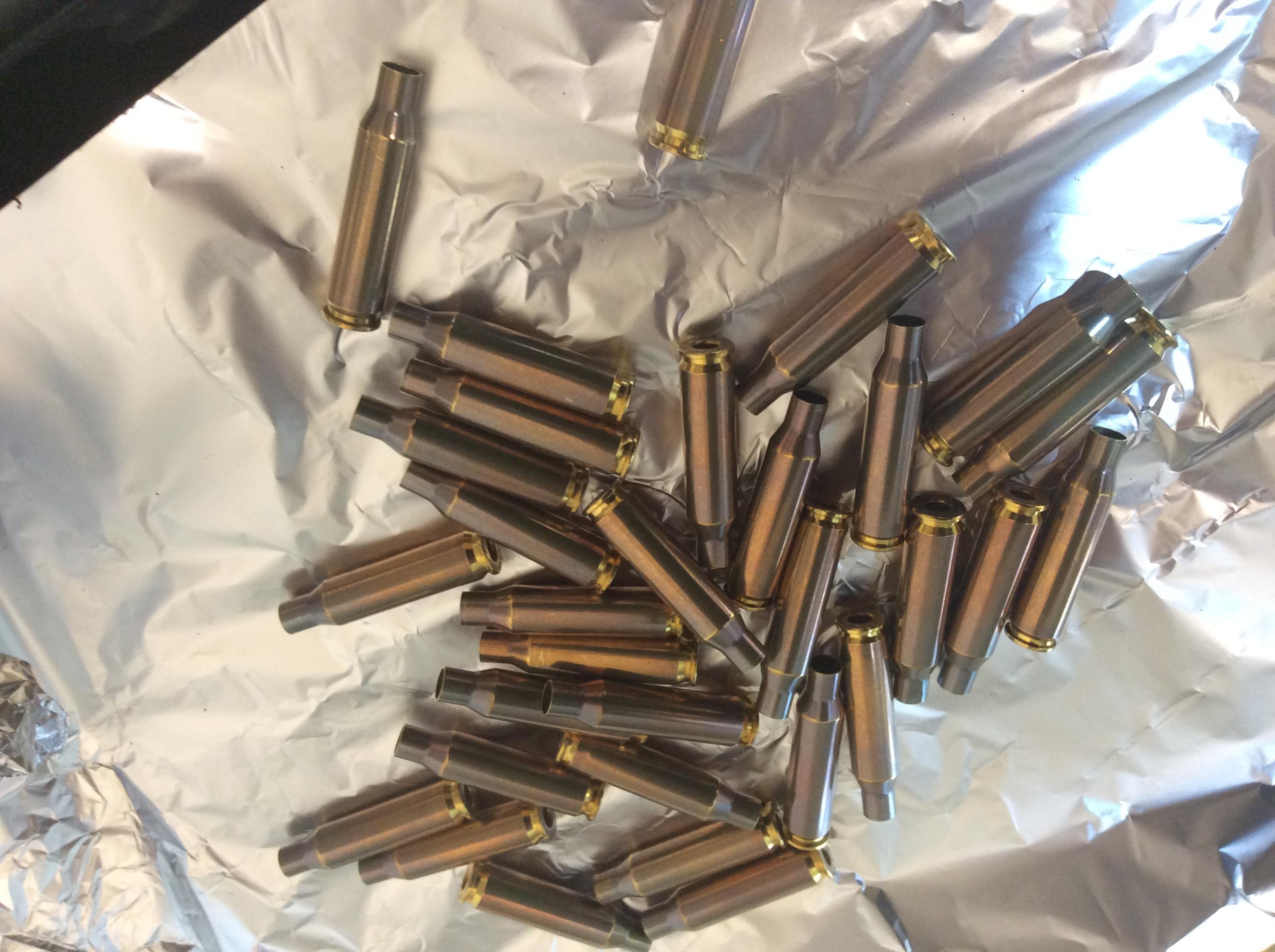I forgot about my brass I put in the oven to dry after tumbling. Looks like I annealed the whole batch.
180 degrees for 30 minutes, I was meant to lightly warm the oven then turn off leaving the fan going. Bloody TV distracted me.
Would you still use it?

Welcome guest, is this your first visit? Create Account now to join.
Welcome to the NZ Hunting and Shooting Forums.
Search Forums
User Tag List
Results 1 to 15 of 28
Thread: Cooked my brass, Whoops
Threaded View
-
24-05-2017, 12:30 AM #1Member

- Join Date
- May 2015
- Location
- New Zealand/Aotearoa
- Posts
- 482
Cooked my brass, Whoops
Similar Threads
-
Slow cooked wild sheep chops.
By veitnamcam in forum Game Cooking and RecipesReplies: 29Last Post: 24-04-2013, 11:28 PM -
Slow Cooked Sweet & Sour Venison
By SIKAHUNTER in forum Game Cooking and RecipesReplies: 0Last Post: 19-06-2012, 12:31 PM
Tags for this Thread
Welcome to NZ Hunting and Shooting Forums! We see you're new here, or arn't logged in. Create an account, and Login for full access including our FREE BUY and SELL section Register NOW!!




 33Likes
33Likes LinkBack URL
LinkBack URL About LinkBacks
About LinkBacks




 Reply With Quote
Reply With Quote


Bookmarks